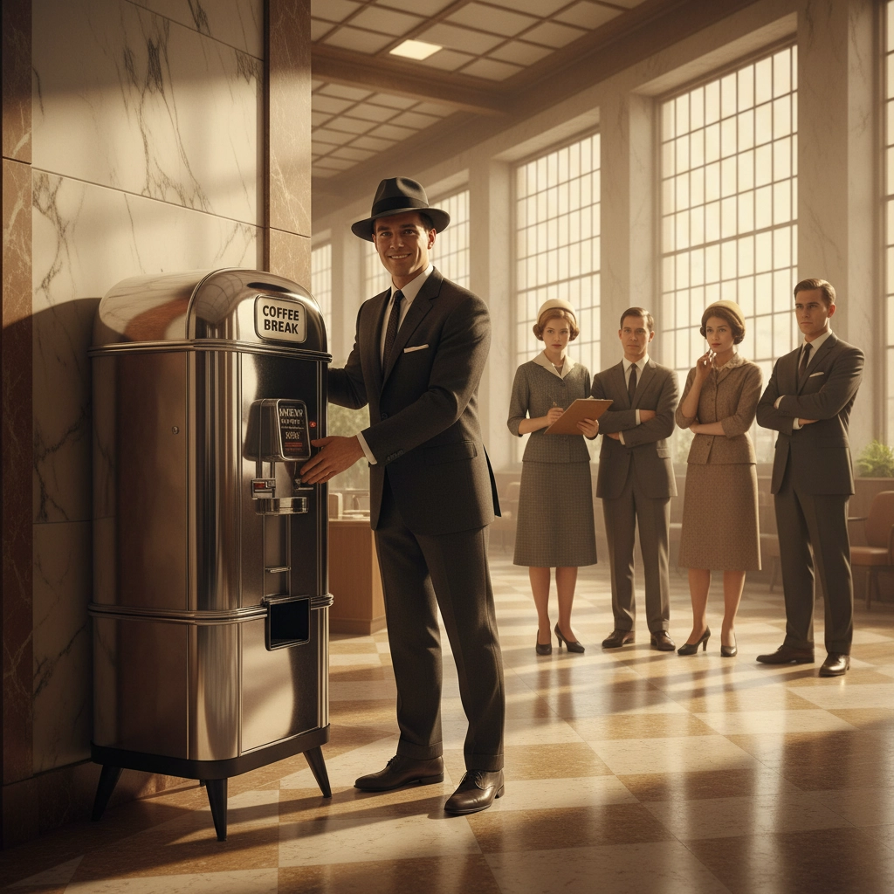Vending Machines & The Mob: A Wild History You Probably Didn't Know
Think vending machines are boring? Think again.
Behind those innocent-looking snack dispensers lies one of the most fascinating chapters in American organized crime history. We're talking decades of money laundering, territorial wars, and some seriously shady business deals that would make your head spin.
Interesting enough, understanding this wild past actually makes modern vending services (like what we do at Pura Vida Air) look pretty appealing. Stick around, and you'll see why today's transparent, tech-savvy vending world is light-years away from the mob-controlled chaos of yesteryear.
The Perfect Crime Tool: Cash and No Questions Asked
Imagine you're running an illegal operation and drowning in dirty cash. What do you do? In the mid-20th century, the answer was brilliantly simple, buy a bunch of vending machines.
Here's why vending machines were absolutely perfect for organized crime: they dealt exclusively in cash, and nobody could trace where that money came from. Consider this, when you buy a Coke from a vending machine, there's no receipt with your name on it, no credit card trail, nothing. Just coins going in, product coming out.
The Chicago Outfit figured this out early. They operated coffee machines and beverage vending throughout schools, hospitals, and businesses everywhere. All those nickels and dimes? They added up to serious money, and it all looked completely legitimate on paper.
The beauty of it was almost insulting in its simplicity: dirty money goes into the vending operation, clean revenue comes out the other side. No bank records, no customer lists, no paper trail that law enforcement could follow. Just good old-fashioned American entrepreneurship... if you ignored where the startup capital came from.
Getting a Foot in the Door (Whether You Wanted Them There or Not)
But money laundering was just the beginning. Vending machines gave the mob something even more valuable; access to legitimate businesses. Every diner, office building, or school that wanted a cigarette machine or jukebox had to work with distributors. And guess who controlled those distribution networks? Ding ding ding - organized crime families.
It started innocent enough. A charming guy in a nice suit shows up offering to place a coffee machine in your lobby at no cost to you. You get a percentage of the profits, customers are happy, everyone wins. What's not to love?
Except now you're doing business with people who have... let's call them diverse business interests. And once they're in the door, well, they tend to make themselves at home. Maybe they suggest their "friend" for your next catering contract. Maybe they know a guy who can help with that labor dispute you're having.
Before you know it, you're not just hosting a vending machine, you're part of an extensive network that spans half the city.
Turf Wars: When Snack Machines Get Serious
The money was so good that different crime families started fighting over vending machine territories. And we're not talking about heated board room discussions here, we're talking about actual violence. In 1970s Boston, the Winter Hill gang and the Italian Mafia were literally at war over vending machine routes. These weren't friendly competitors, they were dangerous criminals with guns, and vending machines were serious business worth killing over.
The 2015 movie "Black Mass" actually shows this perfectly. Whitey Bulger demands that all of his rival's vending machines be removed from specific neighborhoods. It sounds almost comical until you realize this was about controlling millions of dollars in revenue and strategic business relationships.
Territory meant everything. Control the vending machines in a neighborhood, and you controlled access to dozens of businesses. Control enough neighborhoods, and you basically owned the city.
Beyond Snacks: The High-Stakes Stuff
While regular vending machines were great, the really lucrative operations involved specialized equipment. Video poker machines were absolute goldmines, they generated gambling revenue and served as money laundering vehicles.
Then there were the jukeboxes. Meyer Lansky, one of organized crime's biggest names, ran a Wurlitzer distributing business in 1940s New York. Bars and nightclubs throughout the city had his jukeboxes, creating a massive network that generated ongoing revenue while looking completely legitimate.
But the wildest story involves Scopitones. These were basically video jukeboxes that played music videos before MTV was even a twinkle in someone's eye. The company distributing them, Tel-A-Sign, became a total mob front operation.
The stockholders read like a "Who's Who" of organized crime: Vincent "Jimmy Blue Eyes" Alo (Meyer Lansky's partner), Joe "the Wop" Cataldo (who owned the Mafia hangout Camelot Supper Club), and Gerardo Catena from the Genovese crime family. These weren't silent investors, they were actively running the show.
Why This History Actually Matters Today
Now, you might be wondering, why are you telling me all this mob stuff? Because understanding this dark history makes modern vending services infinitely more appealing! When you work with a company like Pura Vida Air, you're getting the exact opposite of those shady mob operations.
Here's what's different for entrepreneurs today:
✅ Complete Transparency: Modern vending companies provide detailed sales reports, inventory tracking, and clear financial records. No mysterious cash flows, no unexplained revenue.
✅ Digital Payment Systems: Today's smart vending machines accept credit cards, mobile payments, and provide electronic receipts. Everything is traceable and above board.
✅ Professional Service: You're dealing with legitimate businesses that follow all regulations, carry proper insurance, and operate with full transparency.
✅ Technology-Driven Operations: Real-time inventory monitoring, predictive restocking, and data analytics mean your vending service is optimized for your success, not anyone else's agenda.
✅ Peace of Mind: When you partner with reputable modern vending companies, you know exactly who you're working with and what you're getting.
The contrast couldn't be starker. Where the mob used vending machines to infiltrate and exploit businesses, today's professional vending services are designed to genuinely benefit their clients.
The Bottom Line: Choose Your Partners Wisely
The vending machine industry has come a long way since those mob-controlled days. Today's professional operators are focused on customer service, technological innovation, and building genuine partnerships with businesses.
But this history serves as a perfect reminder: who you work with matters. The transparency, professionalism, and technology that define modern vending services didn't happen by accident, they developed specifically to differentiate legitimate operators from the shady characters who once dominated this industry.
When you're considering vending services for your business, you want partners who are completely transparent about their operations, provide detailed reporting, and have solid reputations in the community. You want companies that use modern technology, follow all regulations, and genuinely care about your success.
That's the Pura Vida difference, we're everything those old-school operations weren't. Professional, transparent, technologically advanced, and genuinely committed to making the vending experience better.
Pretty wild how a simple snack machine could have such a crazy history. But hey, at least now when someone compliments your office vending selection, you'll have some seriously interesting conversation starters!
Just maybe save the mob stories for after they've made their purchase...😉



